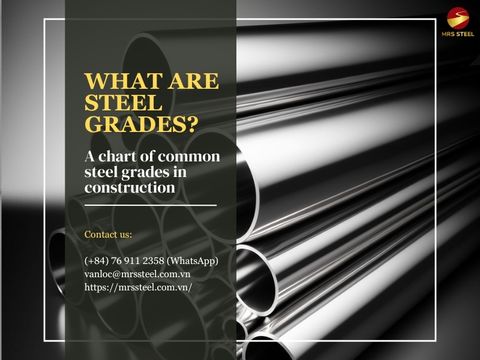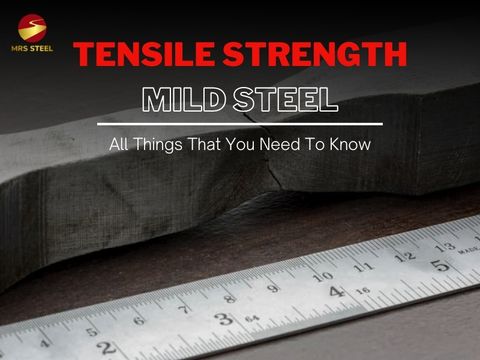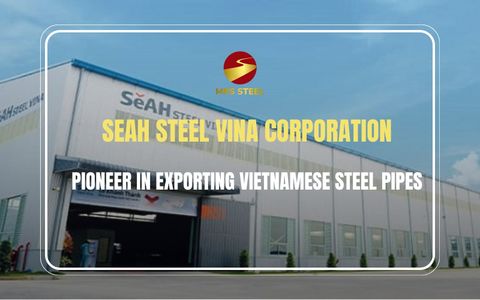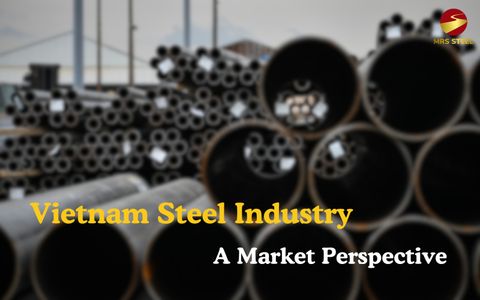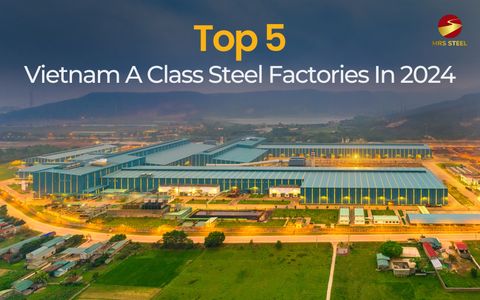How is stainless steel made? Let's learn about the stainless steel production process

BlogDate: 28-05-2024 by: Ngoc Cam
Answering the question of how stainless steel is made also helps you understand why it is called stainless steel. Let’s read more with MRS Steel below!
Stainless steel is one of the most popular materials in construction and civil manufacturing fields. Because of its durability and higher aesthetic properties compared to most other materials, the stainless steel production process is also quite complicated. So, how is stainless steel made? Let’s explore stainless steel manufacturing with MRS Steel below!

Understanding the process of how stainless steel is made is essential for engineers and manufacturers
History of stainless steel
Stainless steel is closely associated with the name of a British steel industry expert - Harry Brearley. He invented a special type of steel that has strong resistance to corrosion and rust by adjusting the Carbon and Chromium content appropriately.
During the production process, Harry Brearley researched and added 8% Ni and 18% Chromium, successfully creating the 304 stainless steel grade that is very popular today. Because of its outstanding strength, stainless steel is widely used in many industrial and civil sectors.

Stainless steel manufacturing involves a series of intricate processes to produce the desired alloy with specific properties and characteristics
Learn about how is stainless steel made
The preparation of raw materials is the first factor that determines the success of the stainless steel production process. The elements iron, chromium, carbon, manganese,... are processed to remove impurities, ready for the next steps.
Melting and casting products in stainless steel production
Steel and alloy metals are added to an electric arc furnace and melted at temperatures above 2800 degrees F (1538 degrees C) for continuously 8 -12 hours so that the metal completely turns into liquid. During the melting process, experts must regularly check the temperature and chemical composition so that the finished products are as desired.
After completely melting the metal, the liquid mixture is crystallized with argon and oxygen to remove impurities such as sulfur, excess carbon and slag.
To increase product applicability, refined steel is cast into billets, plates, bars,... or different shapes to suit all applications.

How to make stainless steel is a complex process involving precise control of various alloys and manufacturing techniques
Forming
Most cast steel is shaped by hot rolling into sheet form while the billet is heated and rolled through a large roller to form steel plates, strips or bars.
In addition to hot rolling, billets can also be cold rolled to form custom-sized steel blocks. Cold rolling typically uses small diameter wheels to produce a smooth, shiny surface with the smallest tolerances.
Heat treatment
Stainless steel is heat treated by heating and cooling under controlled conditions to relieve internal stress and soften the stainless steel. However, this stage requires strict control of the annealing temperature to ensure the quality of the stainless steel interior.

Understanding how do you make stainless steel is essential to appreciate its unique properties and wide-ranging industrial applications
Descaling
After annealing and rolling, stainless steel still has a layer of oxidized residue on the surface. The factory needs to clean off the residue to restore the shiny surface of stainless steel. Currently, nitric acid and hydrofluoric acid are the most popular descaling agents. In addition, the electrolytic method is also used to remove residue from the surface.
Stainless Steel Tempering
The purpose of heat treatment of steel is to increase the hardness and durability of the material. After annealing, stainless steel tends to become softer. When tempering steel, factories often use water because of its low cost and quick cooling effect. First, experts heat the material to about 815 - 900 degrees Celsius, then transfer the alloy to a water bath to suddenly reduce the temperature, maximizing hardness and durability.
Cutting and machining
After the above processing steps, stainless steel is almost complete and can be manufactured into various industrial applications. In this step, the factory can cut and process steel into different shapes and sizes by cutting, sawing or techniques such as plasma, high pressure water jet,...
Surface finishing
Stainless steel is famous for its high aesthetics and outstanding corrosion resistance, ease of cleaning and high applicability. To achieve these properties, stainless steel needs to be surface finished by annealing, hot rolling, cold rolling, grinding, polishing, sandblasting,...

Understanding where does stainless steel come from is key to appreciating its remarkable properties and versatility in modern industries
Methods of controlling stainless steel quality after production
After production, stainless steel needs to undergo a number of quality tests before being distributed to the market.
Mechanical test
Mechanical testing measures the physical capabilities of stainless steel such as load-bearing capacity, stress, tensile strength, Brinell, toughness,...
Chemical testing
Chemical testing aims to check whether the chemical properties of stainless steel meet standards through spectroscopic analysis. Besides, factories also test and measure the corrosion resistance level of materials by spraying salt water.
Importing the best high quality stainless steel at MRS Steel
MRS Steel is known as one of the leading Vietnamese stainless steel suppliers in the world with 12 years of experience cooperating with importers from the United States, Europe, Australia, Southeast Asia,… The company has established good relationships with the largest steel mills in Vietnam such as Hoa Phat, Hoa Sen, SeAH,... helping connect customers with the best product sources.
MRS Steel provides a full range of stainless steel products including plates, coils, strips, tubes,... with diverse specifications, meeting all customer needs. Just contact MRS Steel via Whatsapp: +84 76 911 2358 or Email: vanloc@mrssteel.com.vn, importers will receive the most detailed advice and quotes!
Hopefully MRS Steel has satisfied you with answers about how stainless steel is made and interesting things about the production process of this special steel. If you want an opportunity to import Vietnamese stainless steel at the best price, please contact MRS Steel!



















